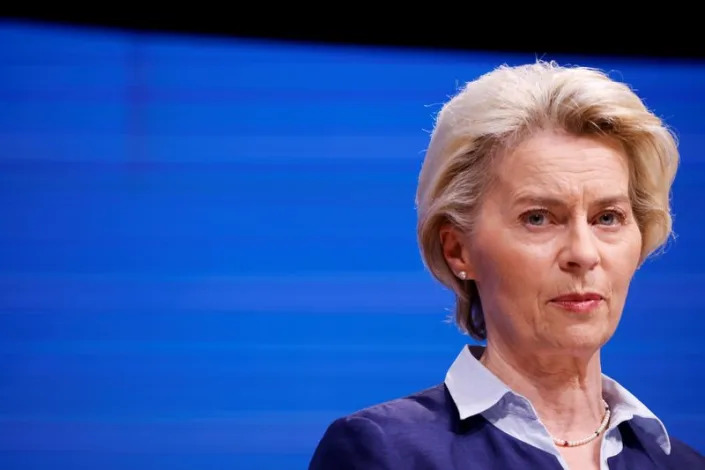Story by By TROY O. FRITZHAND
The Jerusalem Post, Saturday, July 22,2023

CANONIC PUTS its plants through rigorous testing, ensuring the best product for their patients© (photo credit: Troy O. Fritzhand)
Despite its size, it’s the third largest medical marijuana exporter in the world, with more than 30 licensed growers around the country – some, like Rehovot’s Canonic, using cutting-edge technology to develop new strains of cannabis to treat physical and mental ailments.
However, at the same time, many of the 120,000 or so Israelis with licenses to use medical cannabis have been facing rising costs, more bureaucracy, and more difficulties in obtaining their supply.
In order to qualify for a medical marijuana license, a patient must be afflicted with a disorder or disease such as PTSD, chronic pain, epilepsy, and Crohn’s.
Medical marijuana system
According to Modi’in resident Harry Rubenstein, Israel’s medical marijuana system has completely abandoned patients like himself.

CANTEK-brand medical cannabis in at their indoor growing facility in Mavki'im, in southern Israel.
Rubenstein, who was diagnosed with ankylosing spondylitis, a form of arthritis, first became licensed seven years ago when the system required a standard payment by all patients of NIS 370 per month, for which you could receive your prescribed amount in grams. He noted that while inexpensive, this system led to long lines at the few stores at which it was possible to pick up the marijuana.
However, new laws have made it so that patients like him have to struggle immensely, and pay a hefty price, to get their prescriptions. The licensing process requires that patients must reapply for a license every six months or one year. This in itself was a hassle, but now an additional letter is needed from a psychiatrist, for which appointments are filled up for over a year, preventing many patients from renewing their licenses, and as a result forcing them to turn to the much pricier black market for their medicine.
To make matters worse for some, the monthly payment system no longer exists, and now patients must purchase their marijuana in 10-gram batches. The average price for 10 grams is NIS 400, yet Rubenstein’s monthly prescribed amount is 30 grams. This means that his monthly medical cost has increased from NIS 370 to NIS 1,200, something that to him makes no sense.
Despite the long wait for a license, “consultants” can be paid thousands of shekels to speed up the process. Rubenstein said he “doesn’t know who benefits from this system.” He added that it is so easy to get known dangerous drugs, such as opioids, whereas medical marijuana is much more difficult to receive.
The process has become somewhat easier for certain patients. According to regulations passed by the Knesset Health Committee in June, patients suffering from epilepsy, Crohn’s, dementia, autism, malignant cancers, multiple sclerosis, or AIDS, and terminally ill patients who are not expected to live for more than six months, will not require a license to purchase medical marijuana. This, however, does not help patients like Rubenstein, who is forced to “deal with the headache and stress” of the “backward” system.
INTERESTINGLY, THE medical marijuana industry in many ways finds its roots in the Holy Land.
In 1964, Hebrew University researchers Raphael Mechoulam and Yechiel Gaoni first isolated THC, the active compound in marijuana, setting off what ultimately began a gradual but progressive international movement toward medical usage of marijuana, and in certain places recreational. Mechoulam remained the foremost global researcher on marijuana until his death in 2003.
Related video: Some patients find benefits from cannabis (WBAL TV Baltimore)There are more than 160,000 medical cannabis patients in Maryland.Duration 3:45 View on Watch
In the 1990s, marijuana became legal for medical use, and according to Dr. Arnon Afek, the acting chief physician of the Israel Cannabis Association, as well as the associate director-general of Sheba Medical Center and former director-general of the Health Ministry, the industry has made leaps and bound since then.
From the point of view of the ministry, he said, cannabis should be like any other prescription drug, because it “can really help people.” But for that to happen, it needs more structure.
“When you speak of medical-grade cannabis, it is not the same as growing at home, which is illegal; it must be grown [in] the right conditions.... You have, for example, patients with chemotherapy... or children with epilepsy.... You need structure,” he said.
Regarding the price increase, he said that in the world of medicine today, it is “impossible” to maintain the price levels as in the past. It isn’t reasonable to charge the same amount for varying prescriptions of cannabis. For example, with any other drug, if there were options for 400 mg. or 800 mg., the prices would not be the same.
That being said, Afek sympathizes with patients who have to pay more, and offered a more suitable solution – namely, adding marijuana to the health basket. “The larger question is why do people have to pay if it is a medicine?”
As for the long wait times, he said it is a huge issue, “one of the worst problems the Israeli healthcare system is facing, not just in [the case of] cannabis.” For this reason, he is trying to fix the problem of a lack of physicians and healthcare professionals and is working to open a state-of-the-art private medical institution at Reichman University.
Medical marijuana is medicine, he stresses, so barriers must be in place, and prescriptions should be “based on medical consultations.” This is why psychiatric evaluations are necessary. From his words, it appears the medical establishment is working hard to help patients, even if they may not always feel the benefits.
Tour of the R&D facilities
AT THE TASE- and NASDAQ-traded Canonic, a subsidy of Evogene, CEO Ofer Haviv gave The Jerusalem Post a tour of the R&D facilities (the biggest in Israel) and explained how the company tests new strains of cannabis.
Evogene specializes in the manipulation of plants to produce a better crop. It does this along the farming cycle in everything from corn to marijuana. For cannabis, the keys are genomics and chemistry. According to Haviv, the company “combines the two to find the best match and strain” for patients. The company’s director of plant breeding, Dr. Michi Brog, described the process of closed-environment growing.
In their research, they have discovered how the plant affects the pain levels of specific areas of the human body. In doing this, Canonic is able to grow strains that are nearly perfectly targeted at specific patients’ needs, ensuring that those like Rubenstein can receive the best possible care.
These agricultural advancements are heavily aided by artificial intelligence, something new and unique in the field of cannabis. This works by connecting the metabolites, molecules that aid in signaling, such as THC, with areas such as stress and pain. They call it “Indicator AI,” and it is used in their ChemPassAI and GeneRator AI systems.
Haviv said that it “takes all the data to maximize clinical effects, give a premium appearance, and profitable production.” The data included in the company’s AI system calculations are things such as the plant’s genetics and chemistry. As a result, they have seen a 20% increase in THC over the past two years and a much better product for their patients.
Inside their greenhouses – where they are growing currently, not in fully indoor settings, which are planned for the near future – the pungent smell of marijuana is present. They are mainly selling plants, though producing some oils. Their cannabis is sold under their own brand but also white-labeled to other brands selling in the country. Israel is the only place they sell today, in roughly 110 pharmacies.
That supply also reaches the streets, via apps like Telegrass and other outlets, despite the official illegal status of cannabis in Israel. Recreational usage is everywhere, and in Tel Aviv it’s impossible to walk down a street or by a café and not get a whiff of the sweet smell of burning marijuana. Despite attempts at bills to legalize recreational usage, political considerations of various parties will likely keep cannabis in the official no-go status. But in essence, for personal usage, it’s anything goes, making Israel one of the most cannabis-friendly countries in the world, on par with legal locations like Amsterdam, Colorado, and California.
Haviv laments the rising cost of medical marijuana in the country, something he aims to fight, though this has been difficult due to the increase in international growers selling in the country, who flood the market with very high prices for high-quality product and very low prices for low-quality product.
This was echoed by Modi’in patient Rubenstein, who said that there is no shortage of very high-quality medical marijuana in Israel – if your budget suits it.
For those who need it, though, it’s not a luxury. And the challenge facing the industry going forward is how to provide people like Rubenstein with the proper care for their specific needs without breaking the bank.




















